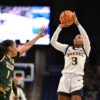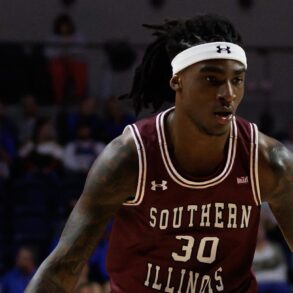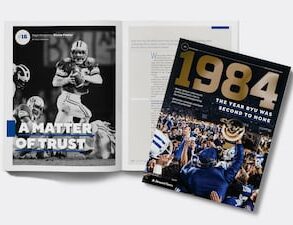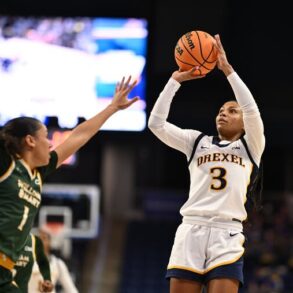
As each year goes by, it seems money is taking over sports more and more.
The most recent victim of this phenomenon is college basketball, which has become revolutionized by Name, Image, and Likeness (NIL) deals. Starting in 2021, college athletes became eligible for pay. This was initially imagined as a way for college athletes to cash in on their names by landing brand deals, but it has since spiraled into colleges essentially paying athletes directly through school boosters.
According to NIL regulations, colleges can’t pay athletes directly. But that doesn’t stop groups of donors and boosters called NIL Collectives from paying athletes on behalf of a school. For example, Bryce Underwood, the No. 1 football recruit in the high school class of 2025, was given a NIL deal worth up to $12 million to commit to the University of Michigan through the NIL Collective, Champions Circle.
This has become the norm for highly-ranked college teams, particularly men’s basketball and football. These sports typically draw passionate fans and large viewership, allowing wealthy alumni of a school to essentially fund their teams’ success.
Although this NIL craze started with college football, it wasn’t felt as strongly there. Even before NIL deals were legalized, big programs like Michigan always dominated recruiting and, therefore, the playing field. Sure, money is being thrown around in this sport, and rosters are constantly being turned over as student athletes transfer to schools with more lucrative NIL opportunities. But college football has always been an unbalanced sport, where the top few programs consistently dominate.
In college basketball, though, the ripples from the NIL revolution are intense. March Madness — college basketball’s flagship tournament of 68 teams — has that name for a reason. It’s madness. Mid-major Cinderella stories are frequent, as it seems like each year a school like Saint Peter’s University in 2022, Loyola University Chicago in 2018 and even our own Lehigh in 2012 will make an unexpected run against a giant like Duke University.
This year, though, there was none of that. The biggest upset of the tournament was No. 10 seed Arkansas State University beating No. 2 seed St. John’s University, which barely even felt like an upset. Arkansas is coached by the legendary John Calipari, plays in the best conference in college basketball and is a program with a lot of recent success.
The disparity in funding between powerful programs and mid-major schools is playing out in a larger disparity on the court. Many of these dominant teams are made up of players who started at smaller mid-major schools before transferring to bigger programs and signing NIL deals with them. For example, National Player of the Year Johni Broome played at Morehead State University for three years before transferring to Auburn University and leading them to a final four appearance.
This trend of poaching talent from mid-major schools will only grow in future years, making college basketball feel a lot like a competition of who has the deepest pockets. I’m glad these exceptional players have the opportunity to showcase their skills at the highest level, but this is at the cost of mid-major schools competing.
All these NIL deals have put a stench around college basketball, which is supposed to be a pure showcase of competition, free from the money talk of professional sports.
Other sports have also been plagued by this reliance on billionaire funding for successful teams. The professional league that has been affected the most is the MLB, where a lack of salary cap or salary floor allows owners to essentially pay players what they wish.
This is problematic due to the difference in ability and willingness to spend between owners. Because of personal wealth, TV deals, outside funding and more, some owners can spend as much as they want.
The Los Angeles Dodgers are the greatest example of this. They have essentially made a mockery of the league through their deferral of large contracts. It has allowed them to monopolize Japanese superstars coming to the MLB, like newcomer Rōki Sasaki, and to add current star-level MLB talent to their already stacked roster, like pitchers Blake Snell and Tanner Scott.
It seems as though nobody can compete with the Dodgers’ wealth, at least not from a small market. The other big market teams, like the New York Yankees, the New York Mets and the Philadelphia Phillies, are still supporting large payrolls from wealthy owners. But these teams are not the teams being left behind.
Like in college basketball, it’s the little guy — teams like the Tampa Bay Rays, whose active payroll is less than 20% of the Dodgers — that get crushed in this competition between who has the most money. This makes the MLB feel like a league of haves and have-nots, where smaller market teams have to do everything right just to compete. And even if they do everything right and develop talent, they might get outpriced by a bigger fish, just like a mid-major college basketball program.
Now, why am I lamenting this reality? After all, it does lead to the best of the best competing on the biggest stage — as seen in this years’ Final Four of all No. 1 seeds and 2024’s World Series between the Yankees and Dodgers. In some respects, this is a good thing, as I, like any sports fan, love seeing the big dogs battle it out on the biggest stage where both teams truly feel like they belong.
Also, this is America, the most capitalist country in the world. Shouldn’t we expect sports to be dictated by money when everything else in the nation is?
While these things may be true, sports being dictated by a contest of wealth takes away what’s so special about them. Sports allow us an escape from the inequality of life and all the stress that comes with it. Unlike anything else in this world, sports are equitable and merit-based — a place you make it only on the shoulders of your objective ability.
With sports like college basketball and the MLB becoming more about whose pockets are the deepest, we lose some of the magic that makes sports special. Further, by only allowing the biggest brands to compete, sports start to feel too much like the corporate environment that we live in every day.
And that’s not what I want sports to be. As a finance and accounting major, I’ll likely be looking at numbers and financial figures all day for the next 40 years. I don’t want that to become the reality of my sports fandom, too.
This post was originally published on this site be sure to check out more of their content.









